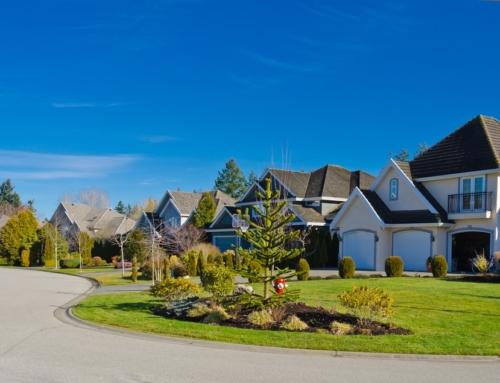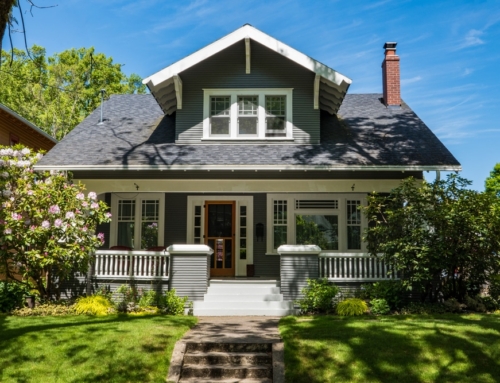Forget about wish lists, Sunday open houses and the compromises you’ll have to make when buying your home.
Sorting through the mortgage morass to find the right loan for your purchase is tough enough to give anyone a headache.
And with the recent introduction of a new mortgage product, the going just got tougher.
Called the “10/1” (pronounced “ten-one”), or a 10-year adjustable rate mortgage (ARM), this mortgage is fixed for the first ten years. It then turns into a regular 1-year ARM. Federal National Mortgage Association (Fannie Mae) and Federal Home Loan Mortgage Corporation (Freddie Mac) recently agreed to begin purchasing these loans on the secondary market, which should quickly make them part of your local lender’s standard slate of loan offerings.
Why would a home buyer choose a 10/1 over a 30-year fixed, a conventional 1-year ARM, or a two-step loan such as the 5/25 or the 7/23?
According to Keith Gumbinger, a mortgage analyst with HSH Associates, in Butler, NJ, the 10/1 gives home buyers the steadiness of a fixed-rate loan at an interest rate that is around a half-point less than a 30-year fixed rate loan. That rate is slightly more than the going rate on a 5/25 two-step loan.
“The most important question you can ask yourself is ‘How long am I going to stay in this house’? Eighty percent of homeowners either sell their homes or refinance their mortgages within seven years,” Gumbinger says.
Gumbinger reasons if you’re going to sell within 7 years, it’s a much more expensive proposition to choose a 30-year fixed rate loan versus a 5- or 7-year balloon, a two-step mortgage, or even a 1-year adjustable rate mortgage (ARM). If you plan on staying 7 to 10 years, the 10/1 is a cheaper alternative.
Despite rising interest rates, two-thirds of all buyers choose fixed-rate loans. The 10/1 satisfies a buyer’s need for stability, yet offers that stability at a lower rate. That means buyers can either qualify for more house or pocket the additional savings.
“If you ask a home buyer how long they plan to stay in their home, you’ll get a blank stare. That’s how the majority of home buyers end up with fixed-rate loans. They want the security,” Gumbinger says. “Basically, the 10/1 is an insurance policy. It gives you a little additional (time) cushion.”
How do 10/1 loans stack up against 30-year fixed rate mortgages, a 1-year ARM, and a 7/23 two-step mortgage?
Fairly well, but there are some caveats. Unlike most ARMs, the 10/1 has a one-time adjustment cap on the interest rate of 5 percent. That means the loan may adjust upward as much as 5 percent at the end of 10 years. Most ARMs of shorter duration, including a 1-year, 3-year and 5-year ARMs have a cap of 2 percentage points per adjustment.
After the first adjustment, subsequent adjustments to a 10/1 are limited to 2 percent points, unless the loan has already hit its overall adjustment cap of 5 percentage points. For example, if your starting interest rate is 8 percent, the 10/1’s maximum interest rate is 13 percent. If the loan’s rate move up to 13 percent in the eleventh year, it can never go any higher.
According to a spokesman at Fannie Mae, the 10/1 loan features a conversion option that allows consumers to convert the ARM to a fixed-rate mortgage at specific adjustment dates. You can also get a 10/1 with as little as 10 percent down.
Which loan offers the most savings? According to a chart prepared by Fannie Mae, showing loans in their worst-case scenarios, a 1-year ARM remains the cheapest option if you plan to be in your home for 5 years or less. On a $100,000 loan, you have paid the following amounts on these loans at the end of 5 years: 30-year fixed rate loan at 8.5 percent, $46,135; 1-Year ARM (starting rate 4.5 percent) $44,244); 5/25 two-step (starting rate 7.875 percent) $43,504; and 10/1 (starting rate 8.125 percent) $44,550.
In the sixth year, the 10/1 starts to show its strength. With a steady rate of 8.125 percent, the loan’s payments remain a steady $742.50 per month. That compares favorably to $768.92 per month for the 30-year fixed-rate loan, $914.74 per month for the ARM (now at its maximum rate of 10.5 percent), and $1346.77 per month for the two-step (now at its maximum rate of 13.875 percent).
While the 10/1 looks as if it could become a new favorite loan, Gumbinger warns home buyers not to use it if you plan on staying in your home past 10 years. “The true benefit ends with the tenth year,” he says.
If interest rates remain steady, a 1-year ARM remains the best and cheapest loan you can get. But if interest rates continue to climb, the 10/1 may be an option worth exploring.






Leave A Comment